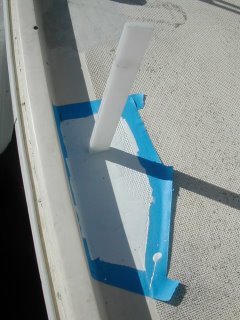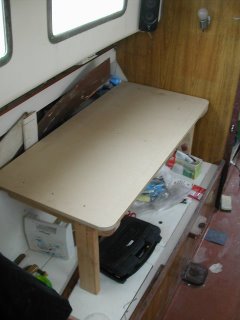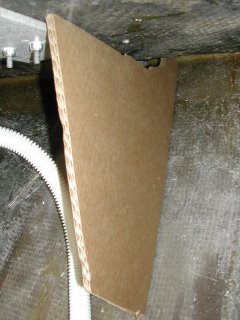
Blogger doesn't want to let me post more than four pix per post, so here are more. A couple of pictures show the backstay chainplate knee template as it approached its final form.
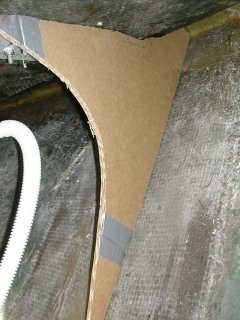
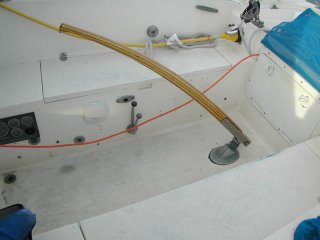
I also installed the new tiller, custom-made for Nevermind by H&M Marine Woodwork in Compton.
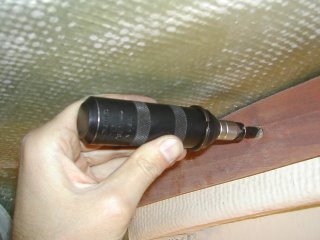
Karl was on Passat today working with Lee to troubleshoot a rough-running diesel, and after they got it running smoothly again we all went on a short harbor cruise. Then it was back to work for me. One small chore on my list was removing the wooden trim from the aft sid eof the main beam. This is where the hand impact driver earned its keep once again. This little tool is absolutely indispensible on a boat, where frozen fasteners are the norm. It's never failed to free up a stuck bolt for me.
In the evening I managed to get a valve adjustment done on the Westerbeke. Spec was .010" and all valves were loose; on the #2 cylinder, both intake and exhaust were .016"!
I adjusted to the correct clearances all aropund, but didn't firethe 'Beke up. Maybe tomorrow.
Other random things? I cleaned up the boat, and measured for the new main bulkhead reinforcement beams. I also templated the upper shroud chainplates which I will design this week.

 I freed the backstay chainplate from its custom-cast bed on the chainplate knee and prepared it for mounting soon. The hawsepipe for the stern rode was mounted on the poop deck in an ample bed of polysulphide, and it dresses things up considerably there. And finally, I got the rope-to-chain splice done on the bow anchor rode. It came out nicely.
I freed the backstay chainplate from its custom-cast bed on the chainplate knee and prepared it for mounting soon. The hawsepipe for the stern rode was mounted on the poop deck in an ample bed of polysulphide, and it dresses things up considerably there. And finally, I got the rope-to-chain splice done on the bow anchor rode. It came out nicely. 

























